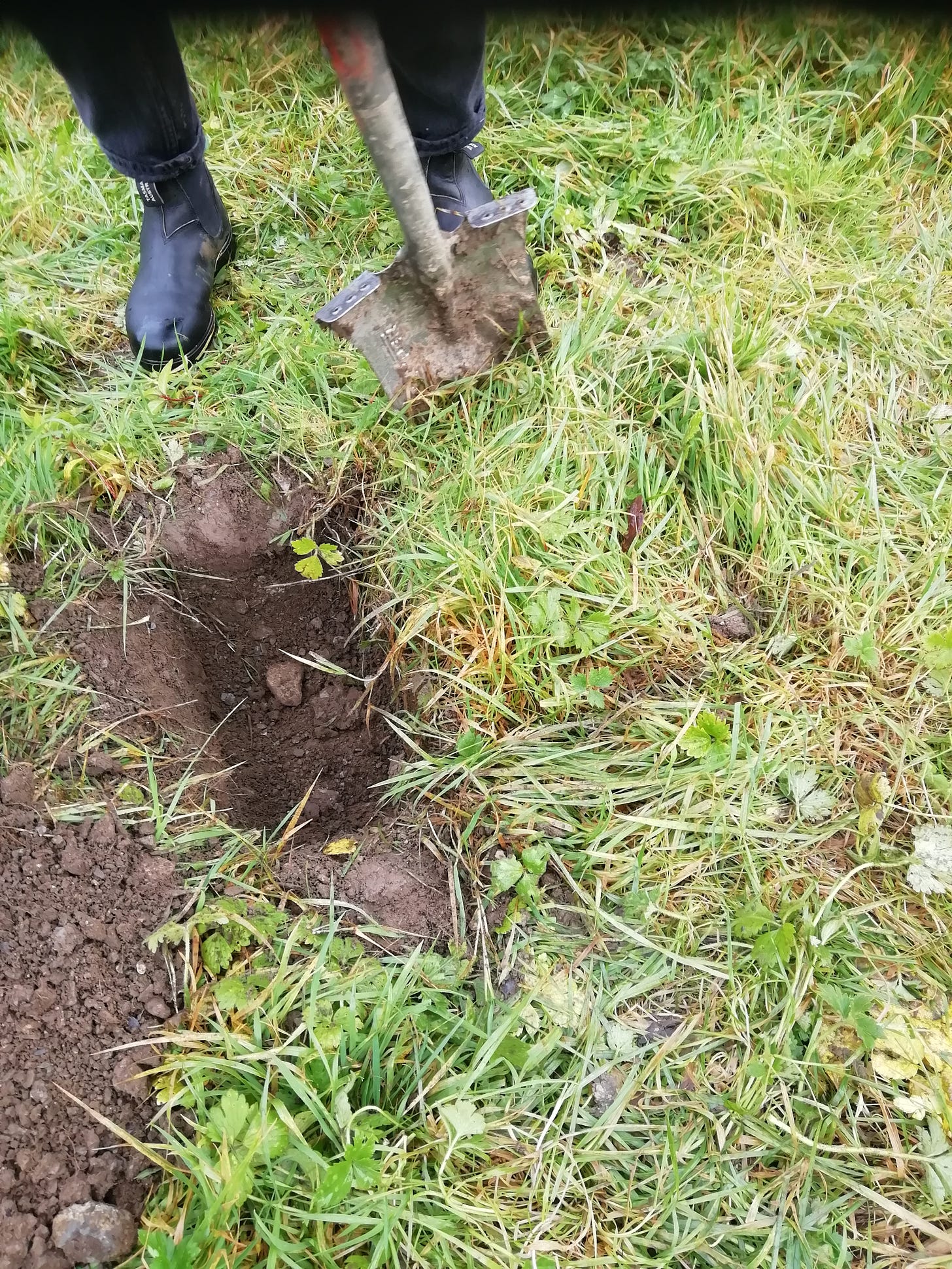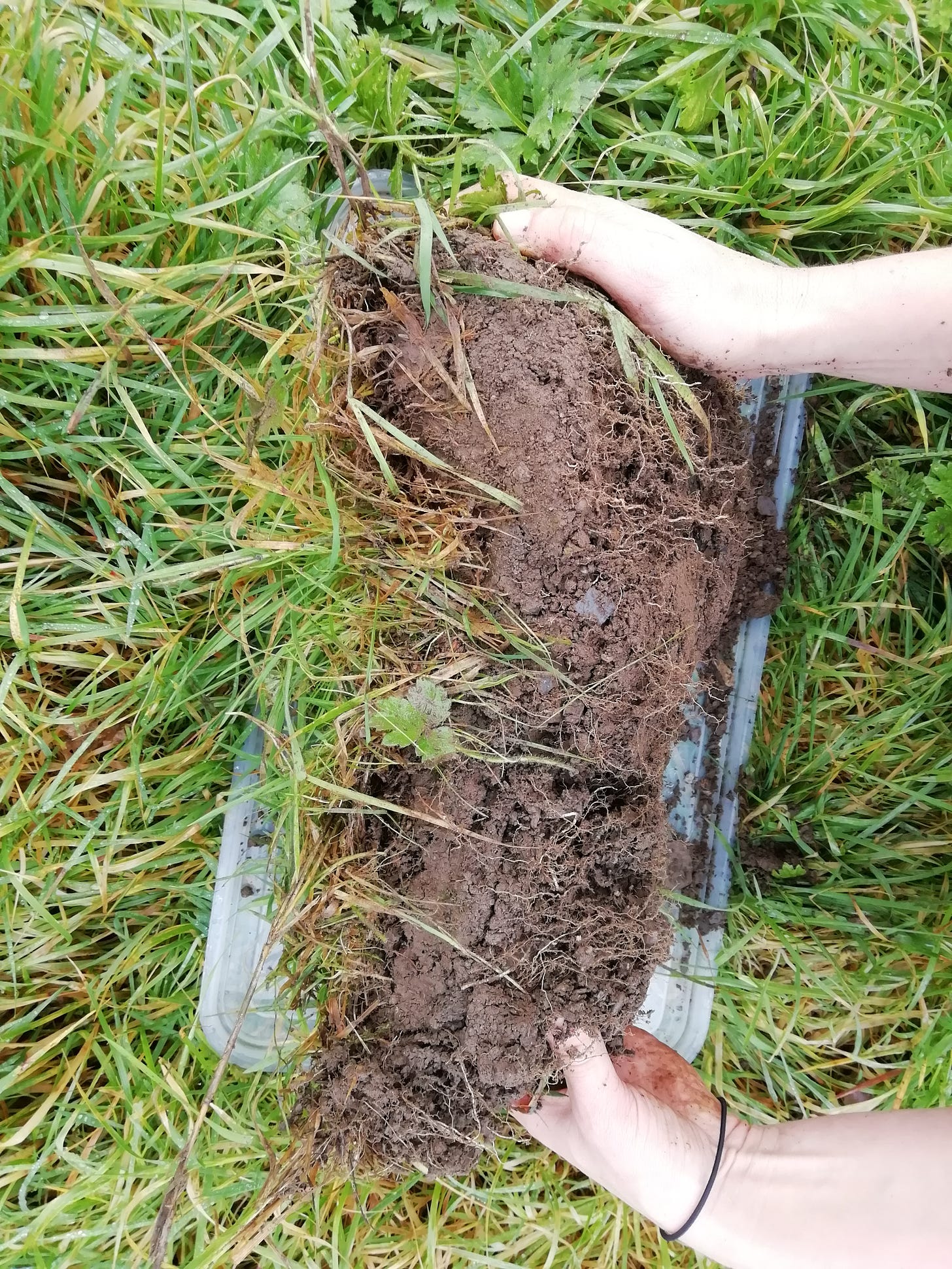Rachael has been at many of the nursery sessions, so I was delighted when she pitched the idea to lead last Thursdays session. She is nearly finished a course on soil. Her final project was to do a study on a particular site. The long term plan is to move the nursery to a different area, so we set about doing the examinations on that particular patch. The tests I assisted Rachael with are just one part of her project work. She is consulting various data bases amongst other necessary research and will be writing up a 4,000 word report. This will be extremely useful information as we plan and design the new nursery site.
As an accompaniment to the session I brought an essay titled Regaining the Option to Improve the World by RJ Rushmore from Durty Words which was edited and designed by Kate O’Shea and Victoria Brunetta. The essay has an urban focus but when recently dipping back into the book I realised how the text gelled with a few things Mark the ecologist at Myross had been speaking about, along with some other meanderings meshing in my brain.
Permissions are part of our everyday and it’s such a shame that we have to think about permissions so much regarding public space. Many people are surprised when I speak of how little of our countryside we get to explore due to permissions. Mark spoke of people wondering if they are allowed to go into Myross Woods. That’s something to note. That’s something that needs working on. Now you need a sign in places to tell you you can enter as well as when you can’t. This permissions business becomes easier when you get to know a place as you observe and interact and it becomes one of your own places. Before Rachael arrived I got to moving some things about that seemed to bother me and had been living down by the house on the way to the nursery. I did not seek permissions. The title Regaining the Option to Improve the World feels like reading an invitation to me. I might just add a suggest a title change to the author, perhaps “our” world instead of “the”.
So Rachael was here and we got to digging some holes. Will shortly appeared and we had a little natter. He mentioned Eileen Hutton and her work as we were very much on a soil journey that morning. He had also made some drawings with pigments he had made with soil and other natural materials, of silhouettes during his Land Walks|Land Talks|Land Marks project . Will took off and we got back to digging.
We rose two sods, each a couple of inches deep and wide and guided by charts began to explore the depths of what usually goes unnoticed underfoot.
The soil is beautifully crumbly, with a good distribution and healthy depth of roots. It’s not parched or overly wet. It’s structure tells us many things would be happy living in it. That is good news for a future tree nursery. Rachael shared this link from Teagasc which shows the diversity in our soils. After the soil has been sampled we will have a very definite idea of what’s going on at the patch which could influence what sorts of trees we can grow at the nursery.
Finally, did a worm count. I often think they scatter when they feel the shovels or forks disturbing the ground-regardless we found lots. We did however find some Australian flat worms very close to the surface. They have been classified as an invasive species, they eat the native earthworms. Their are so many exotic plants at Myross it really was not much of a surprise, it was more of an “ah but of course” moment. My usual approach to dealing with invasives is to suppress and outcompete, to realise that they will now always be present but to implement a strategy to keep the numbers manageable. More on that as it develops. For now the native worms don’t seem to be too bothered. We will have to dig more holes around the site and do a count. If they are only hanging out in the top layer, maybe the birds are taking care of business.
Here is some info on the flatworms. It really is true of this site that every inch of soil and rock and rubble says something about humans and movement and land histories in continuous escalation. And so what do these worms hanging out at Myross say to me about ideas around improving the world? My intuition says consult someone who might know better!







'I did not seek permissions' - Like that!
I find myself often making small improvements that definitely don't need permission.
More interesting maybe are the large improvements which I often think I need some form of permission to undertake. Why?